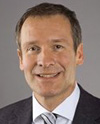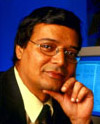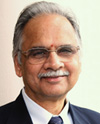Featured Interview – Thomas Schmitz-Rode
Thomas Schmitz-Rode, Dipl.-Ing., Dr.med., is Director of the Applied Medical Engineering department of the Helmholtz Institute, RWTH Aachen University. Interviewed at the recent 2nd Annual IEEE Technology Time Machine Symposium, he discusses the obstacles to the application of new ‘Smart Medicine’ technologies, and the benefits these technologies can bring to the practice of medicine in the next decade.
IEEEtv:
What steps must be taken before we see the widespread application of ‘smart’ medical technology?
Thomas Schmitz-Rode:
On one hand we have, so-to-say, the technological offers. We have technology ‘push.’ On the other side we have our clinical needs, clinical demands. And what we need is a process that optimizes the match between both. It would be relatively worthless to start a project that is just coming out of technological opportunity. From the beginning on we have to include medical doctors, and from the beginning on we have to make sure we are on the right track regarding our medical needs. The overarching view has to be to establish sustainability. So each project, each new treatment modality, or new therapeutic approach should fit into this sustainability point-of-view.
IEEEtv:
How would you define a future health care system based on technologies presented here at the IEEE Technology Time Machine?
Schmitz-Rode:
I call it an over-arching smart healthcare network which includes hospital, home care, resident care and also general practitioners in private practices. All of our efforts have to be combined into an overall network that is able to optimize treatment, not only in acute diseases like strokes, so-called ‘stroke nets’ or ‘cardio nets’ for patients with heart attack. So, not only acute diseases, but also chronic diseases, like diabetes, for example, or chronic heart failure. These patients will be monitored within the network, and the network has to ensure that in all aspects and kinds of living [the patient gets] adequate treatment. An important point here is to avoid hospital stays or reduce hospital stays in order to save costs and improve the quality of life of these patients.
IEEEtv:
What technological breakthrough would you most like to see in the next ten years?
Schmitz-Rode:
A very interesting field in medical engineering at the moment is the combination of conventional, technologically driven medical engineering with biology; the new insights and new achievements of biology. Combined devices which have a technological component and a biological component. For example, bio-functionalization of technical surfaces which are in contact with blood for heart-lung machines, for heart support devices or lung-support devices. I would call it bio-hybrid devices; technical and biological components. Also, the achievements of cell engineering and tissue engineering, and their combination with medical engineering; or example, they are putting cells on scaffolds which are biodegradable, which allow us to design, so called, bio-implants which replace arteries, for example, which can be used as bypass arteries, and which behave like a natural, autologous artery of a specified patient, which, in this regard cause no complications, they work like nature, the function like nature.







 Thomas Schmitz-Rode is Chairman, Applied Medical Engineering at RWTH Aachen University. He received a Dipl.-Ing. degree in Mechanical Engineering from RWTH Aachen University in 1982.
Thomas Schmitz-Rode is Chairman, Applied Medical Engineering at RWTH Aachen University. He received a Dipl.-Ing. degree in Mechanical Engineering from RWTH Aachen University in 1982.  Atam P. Dhawan, Ph.D., obtained his bachelor's and master's degrees from the Indian Institute of Technology, Roorkee, and Ph.D. from the University of Manitoba, in Electrical Engineering.
Atam P. Dhawan, Ph.D., obtained his bachelor's and master's degrees from the Indian Institute of Technology, Roorkee, and Ph.D. from the University of Manitoba, in Electrical Engineering.  Mathukumalli Vidyasagar received B.S., M.S. and Ph.D. degrees in electrical engineering from the University of Wisconsin in Madison, in 1965, 1967 and 1969 respectively.
Mathukumalli Vidyasagar received B.S., M.S. and Ph.D. degrees in electrical engineering from the University of Wisconsin in Madison, in 1965, 1967 and 1969 respectively.